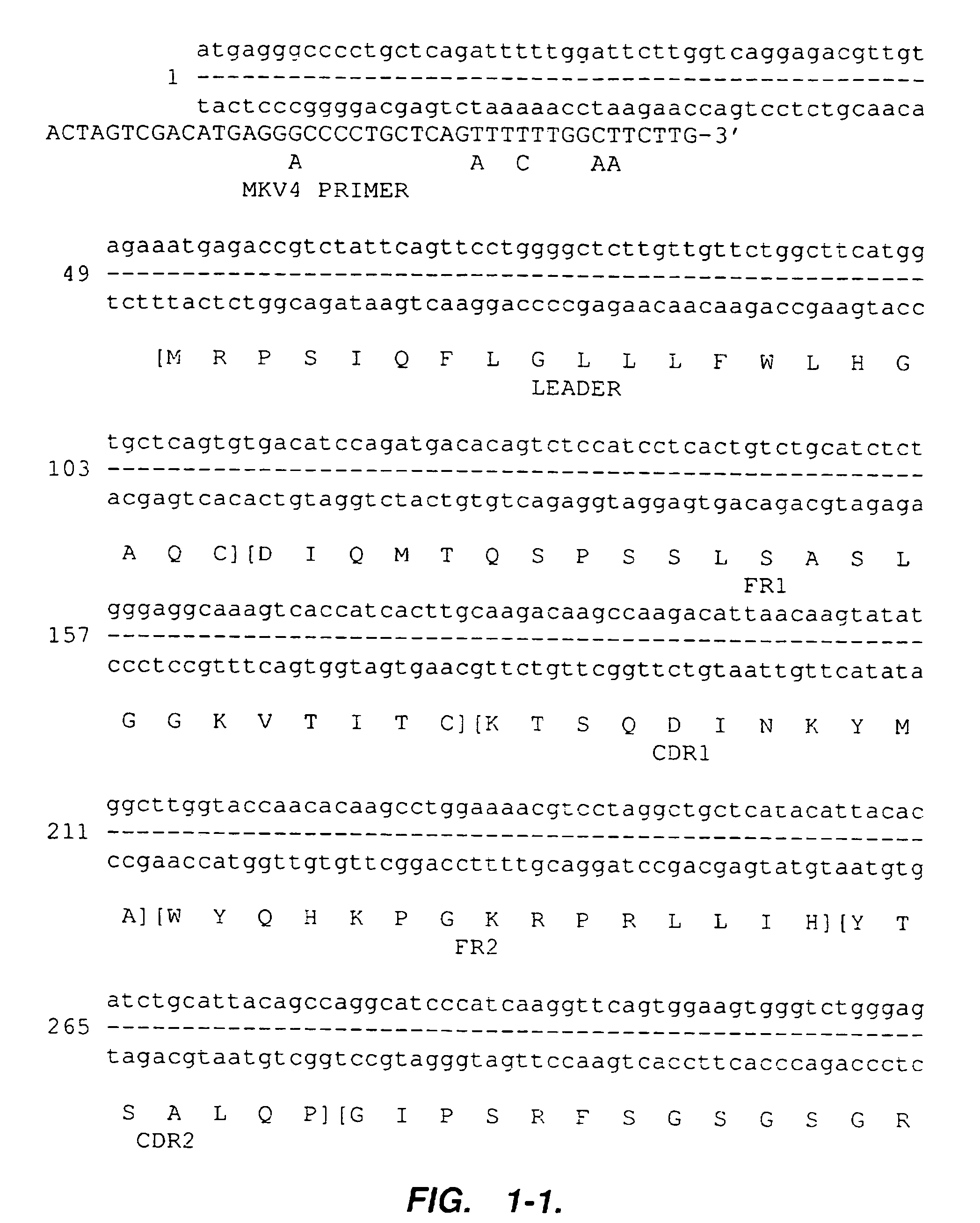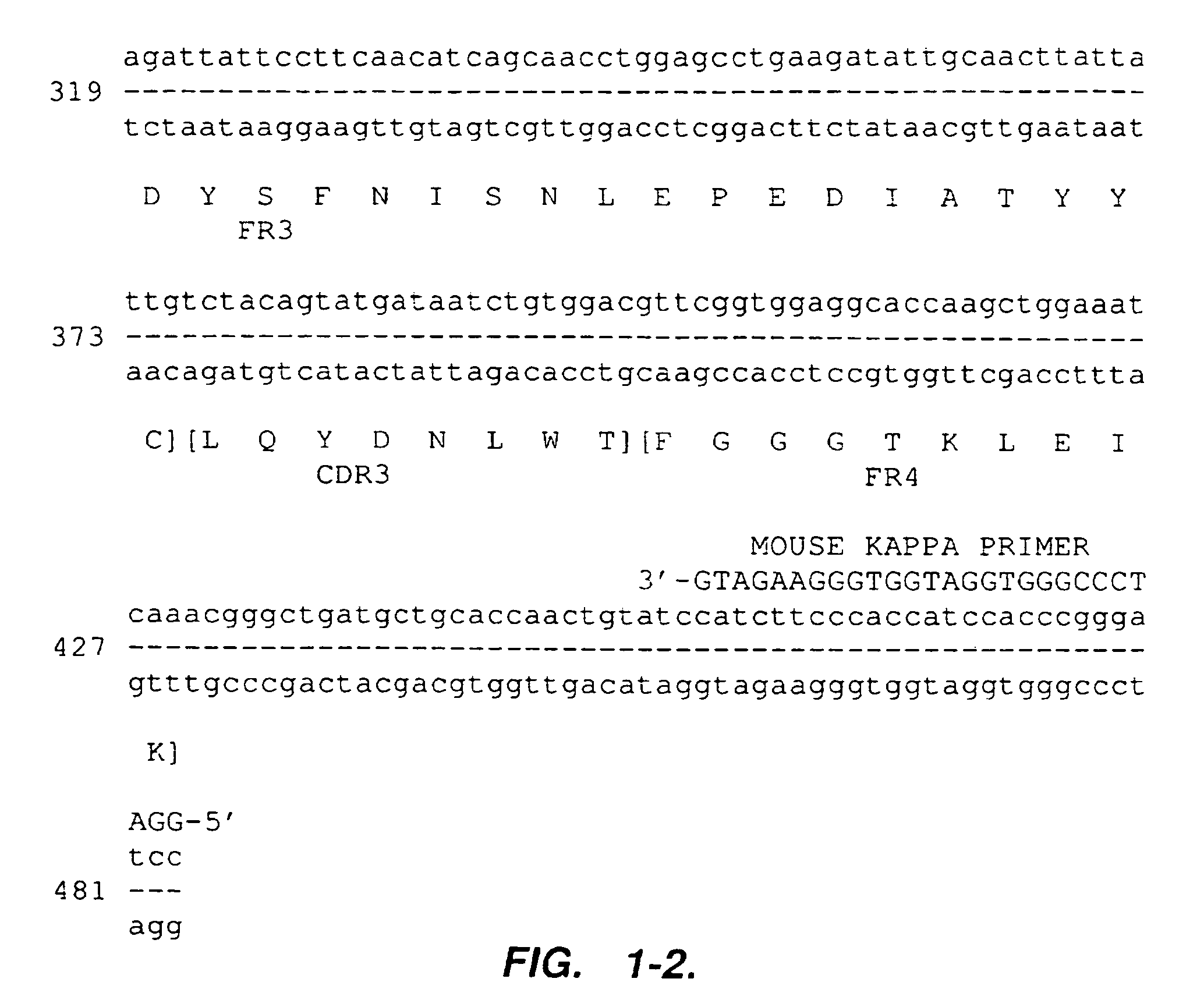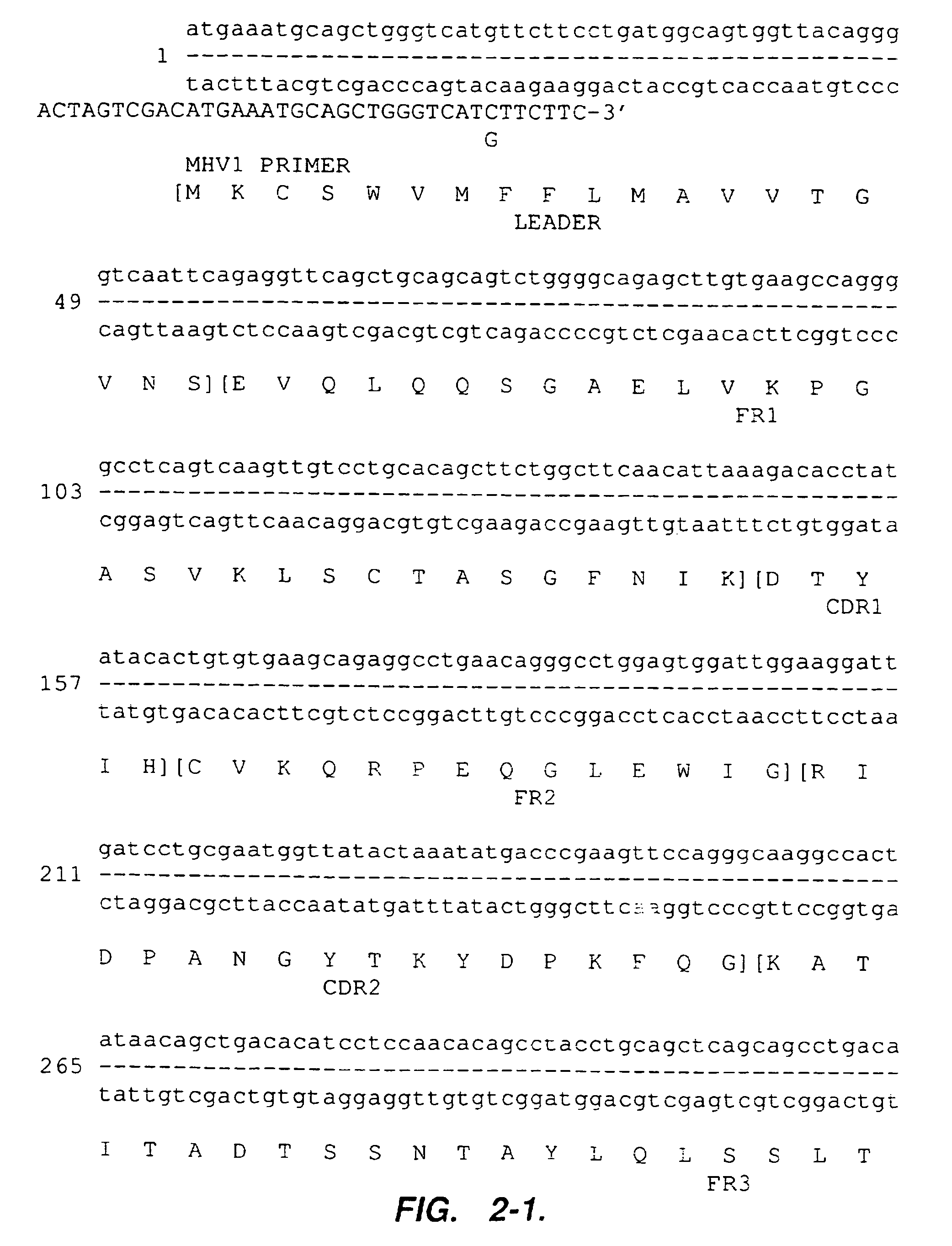Humanized anti-VLA4 immunoglobulins
an immunoglobulin and humanized technology, applied in the field of humanized antibodies, can solve the problems of severe disability and death, severe or fatal damage, and diseases and conditions resulting from brain inflammation with particularly severe consequences,
- Summary
- Abstract
- Description
- Claims
- Application Information
AI Technical Summary
Benefits of technology
Problems solved by technology
Method used
Image
Examples
example 1
Cloning and Sequencing of the Mouse 21.6 Variable Regions
[0105]The mouse anti-alpha-4 integrin antibody 21.6 has been described in co-pending application U.S. Ser. No. 07 / 871,223. Total RNA was isolated from hybridoma cells producing mouse 21.6 antibody. First-strand cDNA was synthesized using a kit (Pharmacia Biosystems Limited). Heavy and light chain variable regions were obtained by using PCR primers designed to hybridize to sequences flanking and external to the sequences coding for the variable regions, thereby allowing cloning of the entire coding sequences for the mouse 21.6 antibody variable regions. Sense PCR primers hybridizing to the 5′-ends of mouse kappa light-chain leader sequences and of mouse heavy-chain leader sequences were designed based on databases of 42 mouse kappa light-chain leader sequences and of 55 mouse heavy-chain leader sequences (Jones & Bendig, Bio / Technology 9:88-89 (1991) (incorporated by reference in its entirety for all purposes)). These primers w...
example 2
Construction of Chimeric 21.6 Antibody
[0111]Chimeric light and heavy chains were constructed by linking the PCR-cloned cDNAs of mouse 21.6 VL and VH regions to human constant regions. The 5′- and 3′-ends of the mouse cDNA sequences were modified using specially designed PCR primers. The 5′-end PCR-primers (Table 3), which hybridize to the DNA sequences coding for the beginnings of the leader sequences, were designed to create the DNA sequences essential for efficient translation (Kozak, J. Mol. Biol. 196:947-950 (1987)), and to create a HindIII restriction sites for cloning into an expression vector. The 3′-end primers (Table 3), which hybridize to the DNA sequences coding for the ends of J regions, were designed to create the DNA sequences essential for splicing to the constant regions, and to create a BamHI site for cloning into an expression vector. The products of PCR amplification were digested with HindIII and BamHI, cloned into a pUC19 vector, and sequenced to confirm that no...
example 3
Expression and Analysis of 21.6 Chimeric Antibody
[0113]The two plasmid DNAs coding for the chimeric 21.6 light and heavy chains were cotransfected into Cos cells. After two or three days, media from the Cos cells was analyzed by ELISA (1) for the production of a human IgG-like antibody and (2) for the ability of this human-like antibody to bind to L cells expressing human α4β1 integrin on their surface. FIGS. 4 and 12 show analyses of unpurified and protein-A purified samples of chimeric 21.6 antibody for binding to human α4β1 integrin, in comparison with purified mouse 21.6 antibody control. These figures show that the chimeric 21.6 antibody bound well to antigen and confirm that the correct mouse 21.6 VL and VH regions had been cloned.
PUM
| Property | Measurement | Unit |
|---|---|---|
| pH | aaaaa | aaaaa |
| pH | aaaaa | aaaaa |
| temperature | aaaaa | aaaaa |
Abstract
Description
Claims
Application Information
 Login to View More
Login to View More - R&D
- Intellectual Property
- Life Sciences
- Materials
- Tech Scout
- Unparalleled Data Quality
- Higher Quality Content
- 60% Fewer Hallucinations
Browse by: Latest US Patents, China's latest patents, Technical Efficacy Thesaurus, Application Domain, Technology Topic, Popular Technical Reports.
© 2025 PatSnap. All rights reserved.Legal|Privacy policy|Modern Slavery Act Transparency Statement|Sitemap|About US| Contact US: help@patsnap.com



